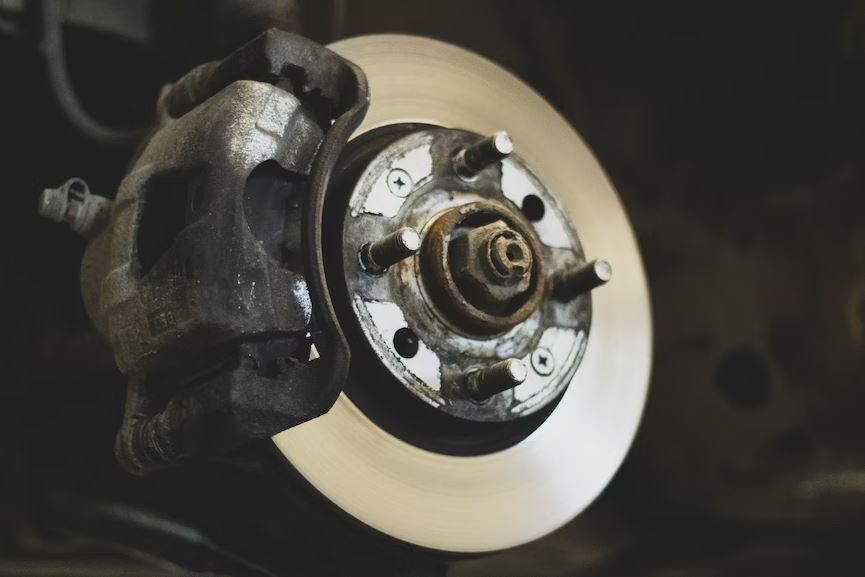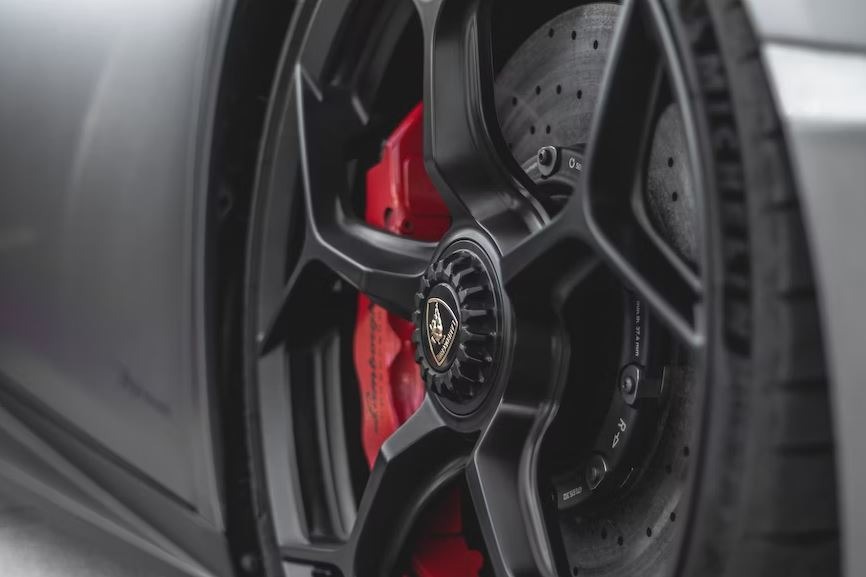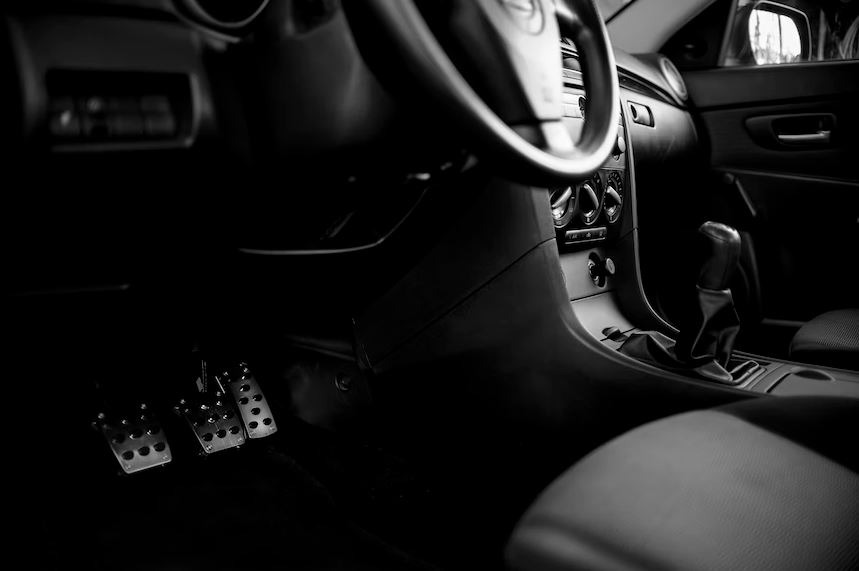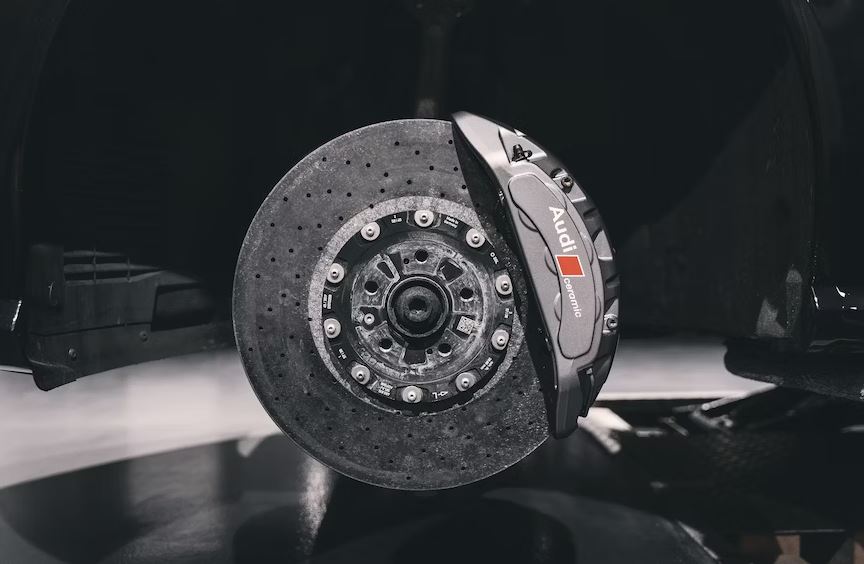Cars can move fast, so it is important for drivers to stop the cars from going too fast and keep them from moving too far away from the intended destination. In order for drivers to put a stop to the movement of cars, they would need to use brakes, which are parts that are designed to stop the wheels of the car from turning any further by clamping the wheels using a brake disc rotor and brake pads.
Besides rotors and pads, there are also other parts involved within a car’s braking system. To know more, here is a simple guide on how car brakes work.
Components of the Brake System
Master cylinder
A master cylinder is a component in the brake system that converts the force applied to the brake pedal into hydraulic pressure. As part of the brake system, it functions as the main hydraulic pump, converting the force applied to the brake pedal into hydraulic pressure that activates the brake calipers or drums.
The master cylinder consists of two pistons, one for the front brakes and one for the rear brakes. When the brake pedal is depressed, the master cylinder piston pushes fluid through the brake lines, causing the brake calipers or wheel cylinders to engage and slow down or stop the vehicle.
Properly functioning master cylinders are essential for reliable braking performance, as they help ensure consistent pressure is delivered to the brakes.
Brake booster
The brake booster is a vacuum-powered device that multiplies the force exerted on the brake pedal. It is located between the brake pedal and the master cylinder, and it operates by using a vacuum source to create a pressure differential that amplifies the force exerted by the driver.
The brake booster works by creating a pressure differential that multiplies the force exerted on the brake pedal, enabling drivers to stop their vehicles with minimal effort. By reducing the amount of physical force required to stop a vehicle, the brake booster enhances the safety and comfort of driving. It also allows drivers to focus on other critical aspects of driving, such as maintaining control of the vehicle and navigating traffic.
A malfunctioning or faulty brake booster can lead to reduced braking performance, which can be dangerous for drivers and passengers alike. Get to know brake boosters more here.
Brake pedal
The brake pedal is connected to the master cylinder, which distributes hydraulic pressure to the brake calipers or wheel cylinders. When the brake pedal is depressed, the master cylinder generates hydraulic pressure and sends it through the brake lines. This pressure then pushes the brake pads against the rotor, creating friction and causing the vehicle to slow down or stop.
The brake pedal is designed to provide a comfortable and responsive feel for the driver, allowing them to easily modulate the pressure and stopping power of the brakes.
Brake lines
Brake lines act as the conduit for the hydraulic fluid that powers the brake system, transmitting the pressure from the brake pedal to the brake calipers or drums. Brake lines must be constructed from materials that can withstand the high pressures and temperatures that are generated during braking. Common materials include steel, aluminum, and various types of rubber.
Proper installation and maintenance of brake lines is paramount to ensuring the safety of the vehicle’s occupants. Any signs of leakage, corrosion or wear should be addressed immediately in order to prevent potential brake failure.
Calipers
Calipers are responsible for stopping the vehicle. These devices are made up of two halves, one of which is fixed in place while the other moves to apply pressure on the brake pads.
Calipers are designed to clamp down on the brake rotor, which in turn slows down or stops the rotation of the wheels. The caliper houses the brake pads and pistons, which are responsible for applying the necessary force to the rotor.
Whether it’s a disc or drum brake system, the calipers play a pivotal role in ensuring the vehicle comes to a complete halt. Here’s why brake calipers are vital for your car’s safety
Rotors
Rotors are the components that the brake pads press against to slow down or stop the vehicle, they are responsible for converting the kinetic energy of the car into heat energy. The rotor is a circular disc that is mounted to the wheel hub and is designed to withstand high levels of friction and heat.
Typically made of cast iron or steel, rotors can also be manufactured from lightweight materials such as aluminum or ceramic, which can provide improved performance and longevity. There are different types of brake rotors, and it’s best to know how to maintain them to keep the brakes in proper condition. Rotors are typically drilled or slotted to improve braking performance.
Pads
Brake pads are responsible for creating friction with the brake rotor, which slows the vehicle down. They are made from a variety of materials, including ceramic, organic, and metallic materials. Ceramic brake pads are known for their durability, while organic brake pads are quieter and produce less brake dust. Metallic brake pads offer the best stopping power but are also the noisiest and produce more brake dust. Don’t know what kind of brake pads to choose? Get to know ceramic and metallic brake pads here.
How Brakes Work
From the outset, a vehicle stops when the brake pedal is pressed, as it activates the brake booster and master cylinder, which creates hydraulic pressure in the brake lines. This pressure is then transmitted to the calipers or brake drums, which generate friction against the brake pads or shoes, slowing down the vehicle.
Brake pedal pressure is a crucial aspect of the braking system, as it is responsible for converting the force exerted by the driver’s foot into stopping power. When the driver steps on the brakes, a piston in the master cylinder compresses the brake fluid, which in turn activates the calipers or wheel cylinders to press the brake pads against the rotors or drums.
At the same time, when the brake pedal is pressed, the master cylinder creates pressure that is transferred to the brakes via the brake lines.
Brake line pressure also takes part in slowing down a vehicle. When the driver presses the brake pedal, the force generated is transmitted to the master cylinder. The master cylinder then creates hydraulic pressure, which is transmitted through the brake lines to the individual brake calipers or wheel cylinders.
Meanwhile, the caliper works by converting the hydraulic pressure created by the brake pedal into mechanical force that pushes the brake pads against the rotor. The force generated by the caliper needs to be precise, so the braking system can be responsive and effective.
The role of friction and heat
When the driver applies the brakes, a hydraulic system activates the brake pads or shoes, which then press against the brake rotor or drum. This generates friction, causing the vehicle to slow down or stop. However, the friction also generates heat, which can weaken the brake components over time. To prevent this, many modern vehicles are equipped with cooling systems that dissipate the heat and reduce wear and tear on the brakes.
An aftereffect of friction on the brakes is the brake pads wearing down. Over time, the brake pads wear down and their thickness decreases. Worn brake pads can reduce the effectiveness of the brakes and increase the stopping distance, making them less reliable in emergency situations. Get to know the physics behind braking here.
Types of Brakes
There are several types of brakes used in the automotive industry, each with its own unique features and benefits. The most common types of brakes include disc brakes, drum brakes, anti-lock brakes and emergency brakes.
Disc brakes
Disc brakes offer better stopping power and are typically used on high-performance vehicles. This makes them a popular choice for high-performance vehicles due to their superior stopping power. Unlike traditional drum brakes, disc brakes use a rotor and caliper system to slow down the vehicle. This design allows for more efficient heat dissipation, reducing the risk of brake fade during heavy use. The increased stopping power of disc brakes allows for shorter stopping distances, which is particularly important for high-performance vehicles operating at high speeds. Also, disc brakes are easier to maintain and repair than drum brakes, making them a practical choice for performance-oriented vehicles.
Drum brakes
Drum brakes are less expensive and are commonly found on smaller cars. They consist of a circular drum that rotates along with the wheel and is lined with brake shoes that press against it when the brake pedal is applied. This design allows for effective stopping power at a lower cost than their more advanced disc brake counterparts. Drum brakes are reliable and require minimal maintenance, making them an ideal choice for drivers who prioritize affordability and ease of use. If you want to understand better how disc brakes and drum brakes differ, check this out.
Anti-lock brakes (ABS)
Anti-lock brakes (ABS) are a safety feature that prevent the wheels from locking up during sudden stops. This system is designed to prevent the wheels from locking up during sudden stops. The ABS uses sensors to detect when a wheel is about to lock up and automatically reduces the brake pressure to that wheel. This allows the driver to maintain steering control and avoid a potential collision. The system is particularly effective in wet or slippery conditions where loss of control is more likely. Anti-lock brakes have been shown to significantly reduce the risk of accidents and are an essential feature for any vehicle designed with safety in mind.
Emergency brakes
Emergency brakes, also known as parking brakes, are essential for preventing a parked car from rolling. They function as a secondary braking system, primarily used to prevent a parked car from rolling away. Emergency brakes work by applying pressure to the wheels, locking them in place, and ensuring that the car remains stationary. These brakes are particularly useful in situations where the car is parked on a steep incline or uneven terrain.
It is essential to regularly test and maintain emergency brakes to ensure that they are functioning correctly. Failure to do so can result in accidents and injuries, making it imperative to prioritize the upkeep of this crucial safety feature.
Regenerative brakes
Some vehicles may also have regenerative brakes, which use the kinetic energy from braking to recharge the battery. These brakes work by capturing kinetic energy generated during braking and converting it into electrical energy, which is then stored in the vehicle’s battery. This process not only reduces wear and tear on traditional braking systems, but also increases the vehicle’s overall range and decreases the need for frequent recharging. If you want to know how regenerative brakes work, check this out.
Selecting the Right Brake Technology
Each vehicle has its unique brake system specifications that are optimized for its weight, power and drivability. The brake system used in a car designed for urban driving may differ from the one used in a high-performance sports car. Similarly, the brake system used in an off-road vehicle will differ from that used in a passenger car. The intended driving conditions such as the climate and terrain also play a crucial role in brake selection. A professional assessment of these factors is necessary to ensure that the braking system employed is fit for purpose and can guarantee optimum safety and performance.
Conclusion
Understanding how car brakes work is crucial to ensuring the safety of yourself and others on the road. From the brake pedal to the brake pads, rotors, and calipers, each component plays a vital role in slowing down and stopping a vehicle. Regular maintenance and inspection of the brake system can help prevent accidents and prolong the lifespan of the brakes.




